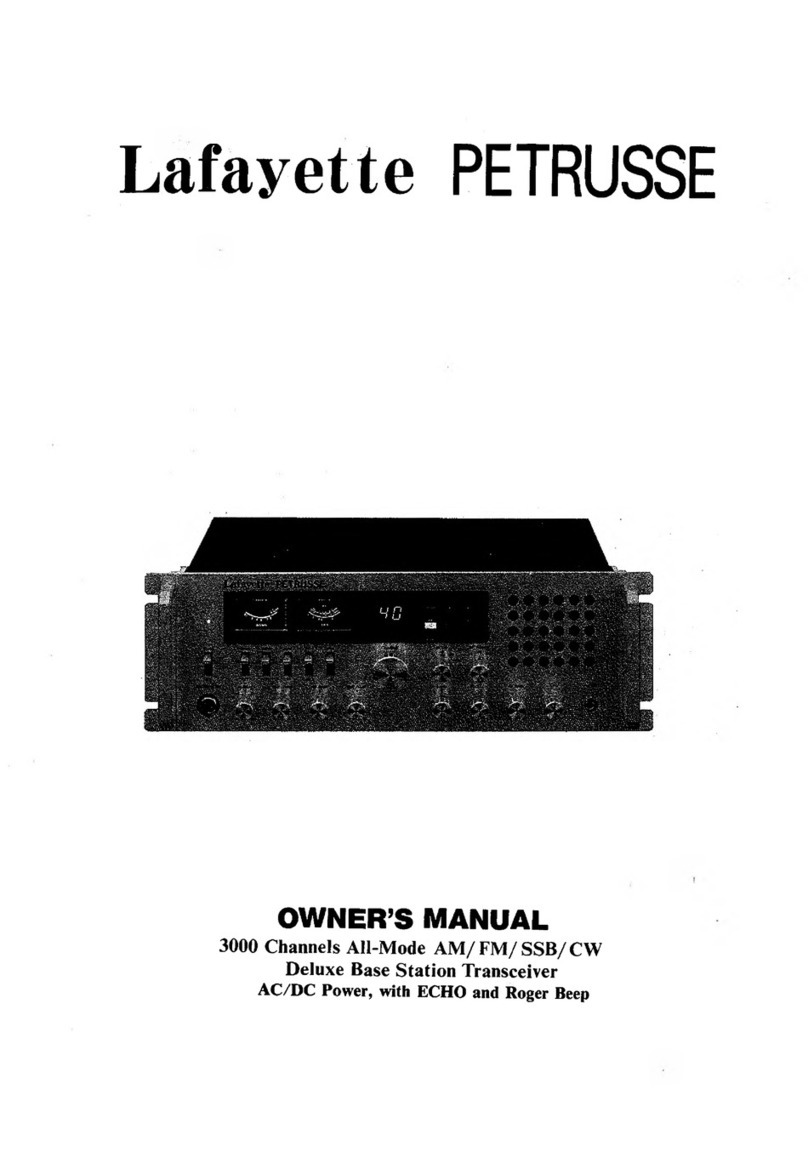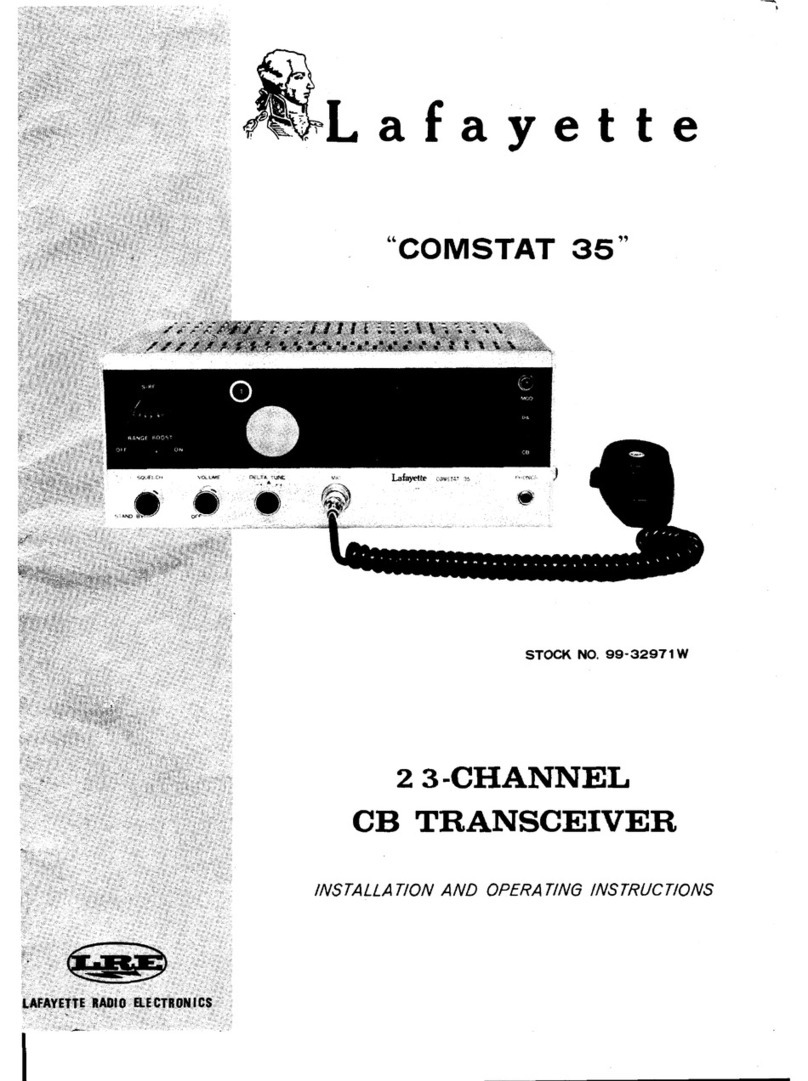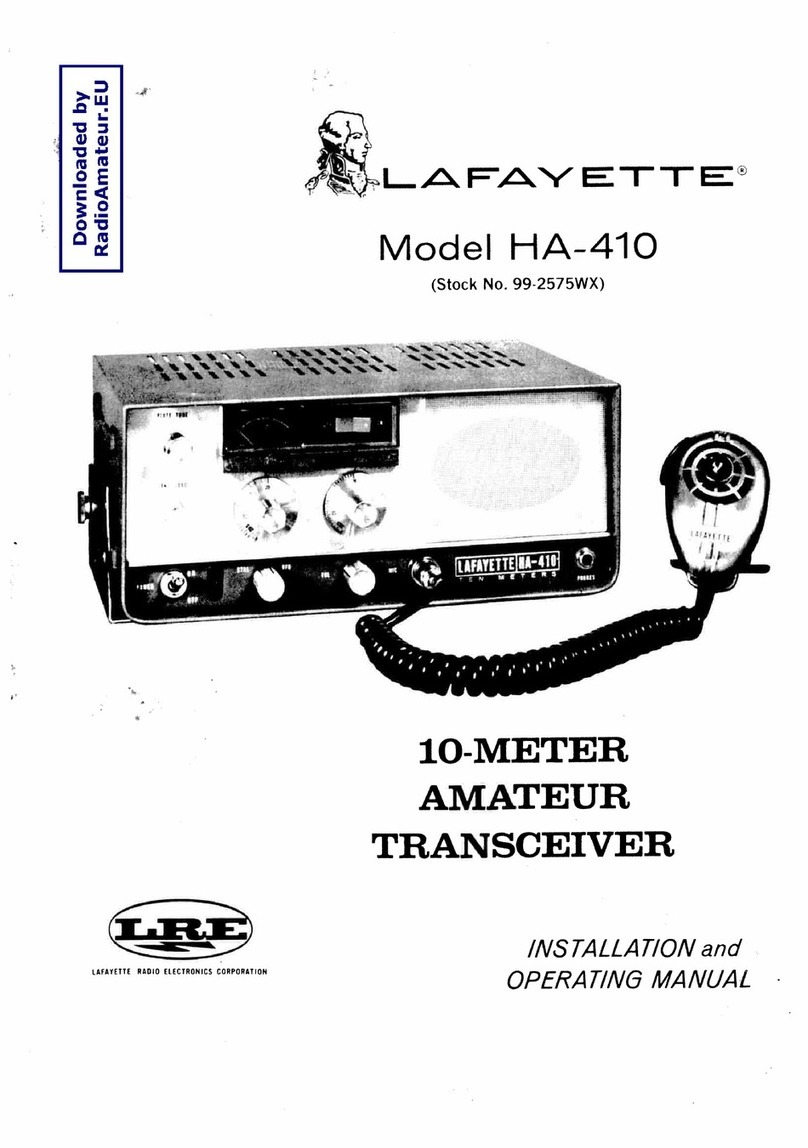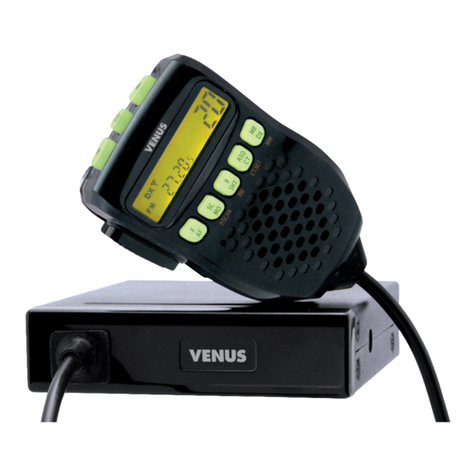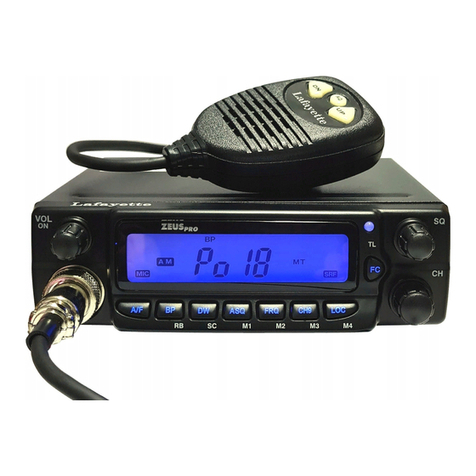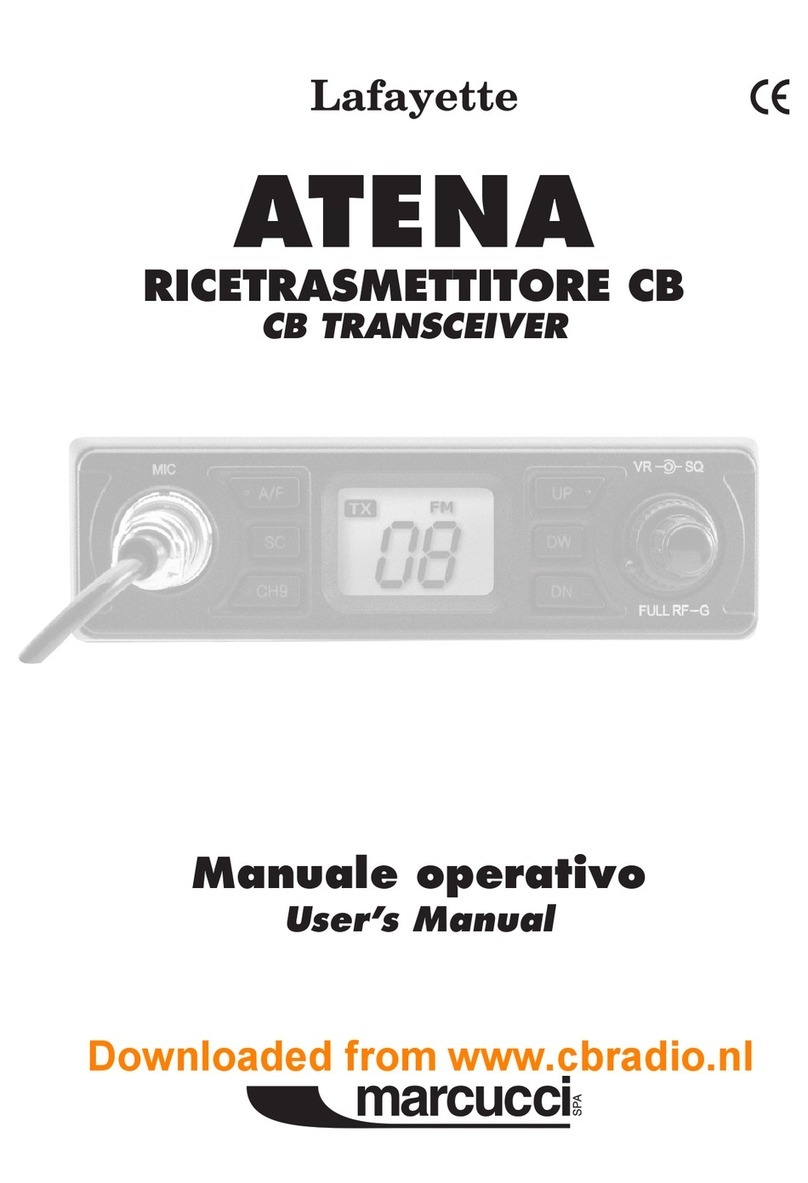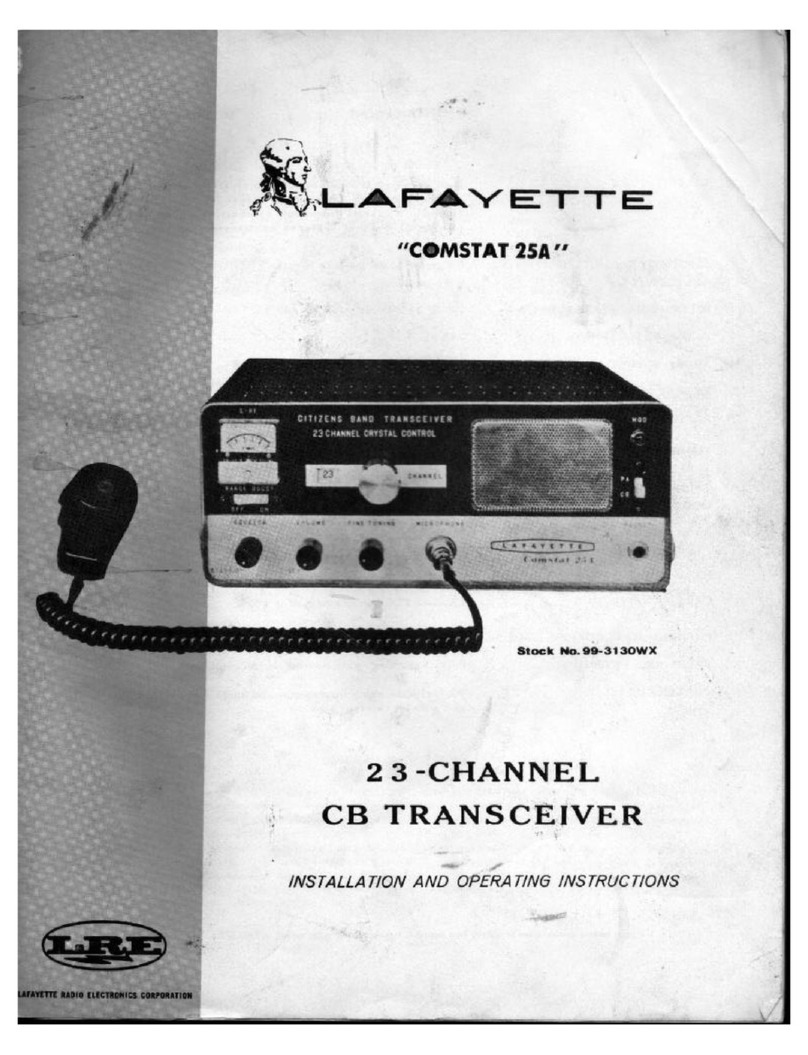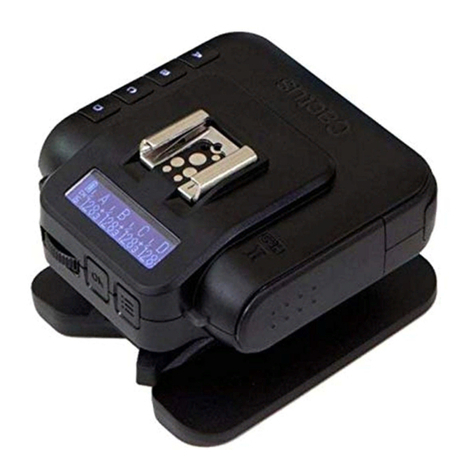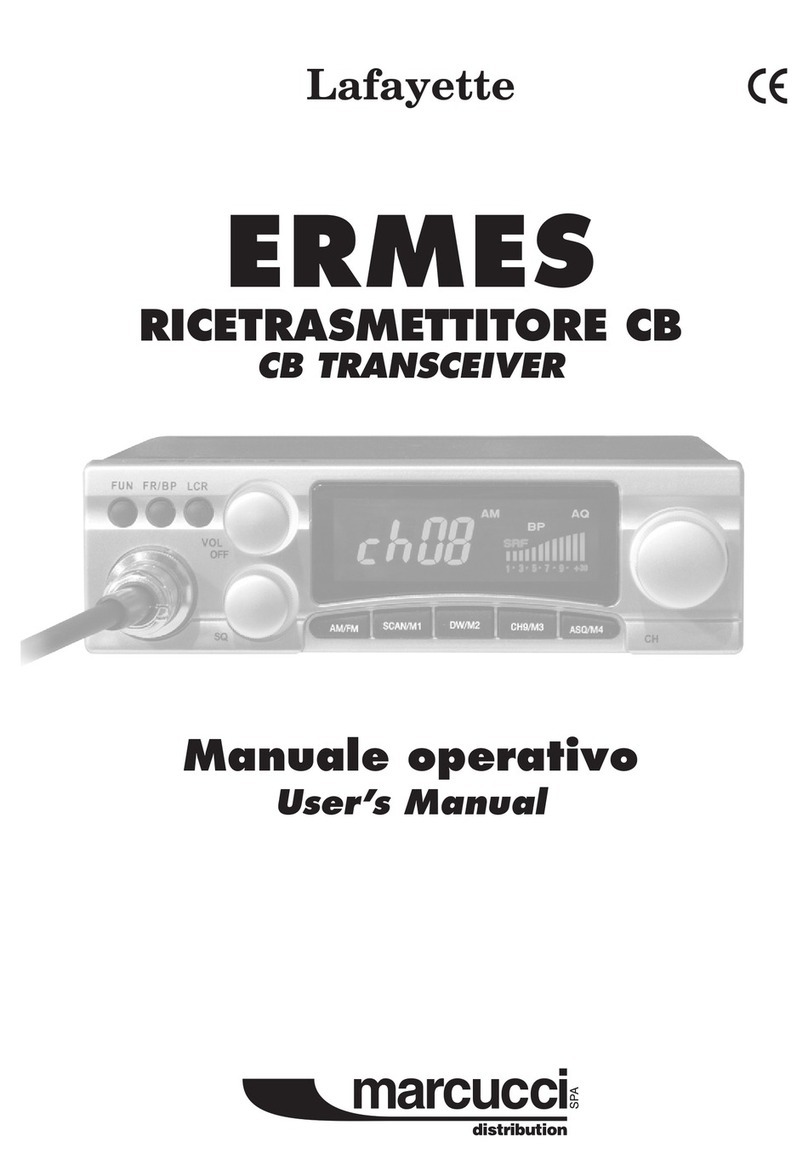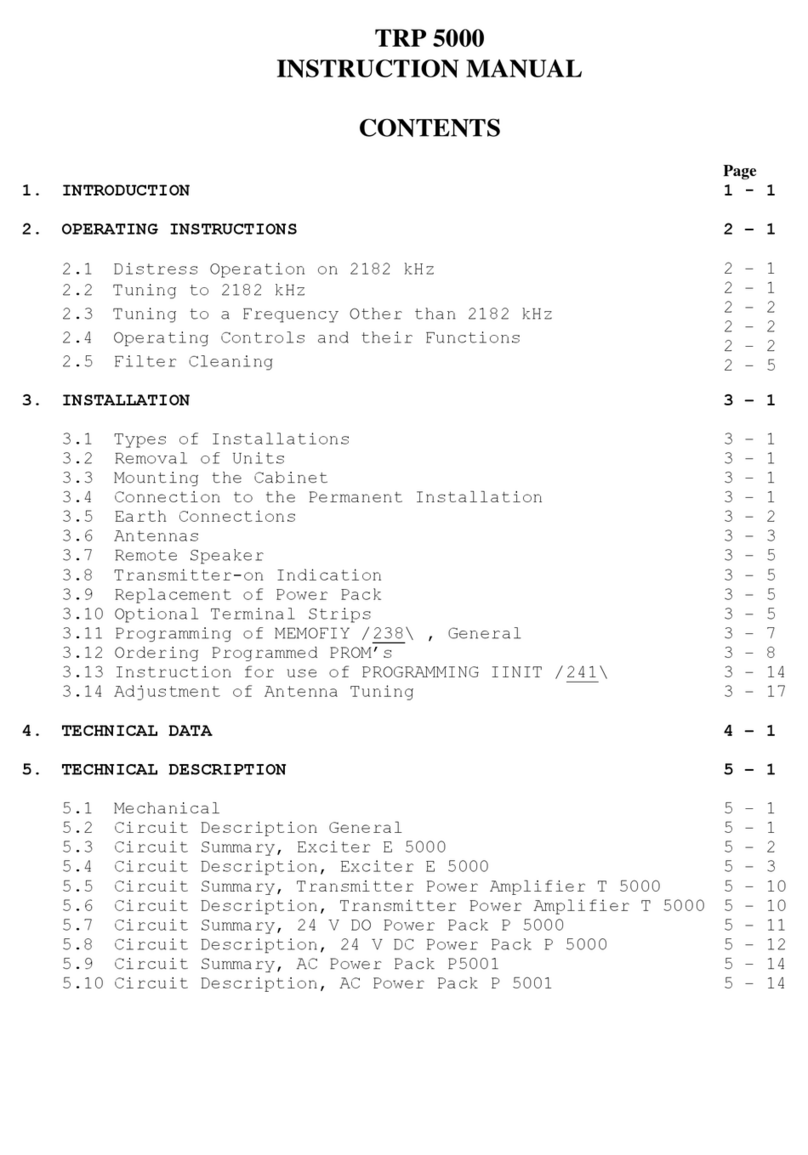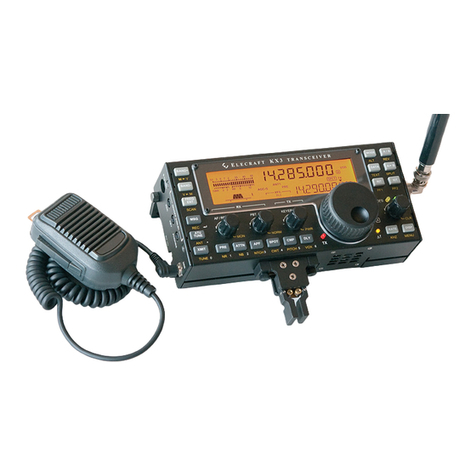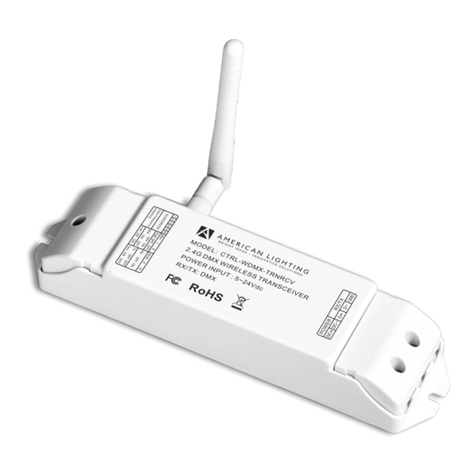
ITALIANO
Grazie per avere preferito un prodotto Lafayette. Per potere utilizzare al meglio il nostro prodotto vi con-
sigliamo di leggere con attenzione il presente manuale d’uso.
Attenzione
Non tentare di trasmettere senza l’antenna collegata in quanto il ricetrasmettitore potrebbe danneggiarsi
seriamente.
Il presente apparato è stato tarato e testato in fabbrica. Non aprirlo o manomettere le parti interne per
nessun motivo. Eventuali interventi tecnici devono essere effettuati solo da personale autorizzato.
Collegamento dell’antenna
Il cavetto di discesa dell’antenna deve essere terminato con un connettore PL-259. Utilizzare solo antenne
accordate sulla gamma dei 27MHz ed effettuare la discesa utilizzando del cavetto schermato tipo RG-58/U
con impedenza tipica 50 Ohm.
Aggancio del microfono
Installare il supporto del microfono in una posizione agevole della vostra autovettura, facendo bene atten-
zione che il cavetto o il microfono stesso non vadano ad interferire con le normali operazioni guida.
Disturbi causati dal circuito di distribuzione dell’auto
Normalmente le automobili moderne non presentano più problemi di schermatura dei cavetti di distri-
buzione e del circuito di accensione, quindi il ricetrasmettitore non dovrebbe risultare affetto da disturbi
durante il funzionamento del motore.
•
•
DISPLAY E COMANDI: ISTRUZIONI PER L’USO DELL’APPARECCHIO ARES
Dopo aver correttamente installato e collegato il vostro ricetrasmettitore CB, (antenna tarata a 27 MHz e
alimentazione 12V DC), procedete con i seguenti sei passi per un uso corretto dell’apparecchio:
Passo 1: collegare il microfono alla presa microfono sulla parte frontale dell’apparecchio e verificare
che sia fissato in modo stabile.
Passo 2: assicurarsi che il connettore dell’antenna sia saldamente collegata all’apposita presa.
Passo 3: assicurarsi che la manopola di controllo squelch sia in posizione ore 9.
Passo 4: accendere l’apparecchio e regolare il volume fino ad ottenere un livello ottimale.
Passo 5: selezionare il canale desiderato agendo sull’apposito selettore.
Passo 6: per trasmettere premere il pulsante PTT sul microfono; per ricevere rilasciare il pulsante PTT.
Comandi e indicatori:
Connettore microfono a 4 pin
Selettore volume e ON/OFF
Selettore Squelch
Display LCD
Selettore AM/FM
Scansione
Canale 9 (Reset)
Selettore canale Su/Giù
1
2
3
4
5
6
7
8
1 2 3 7 8654
CONTROLLI E CONNETTORI: FUNZIONI E USI
1 - Selettore ON/OFF e Volume
Questo selettore vi consente di accendere e spegnere l’apparecchio e di regolare il volume per ottenere
un livello ottimale di ascolto.
2 - Selettore SQUELCH
Ruotare in senso orario per eliminare il rumore quando non vi è segnale in ricezione per consentire una
condizione di standby silenziosa.
